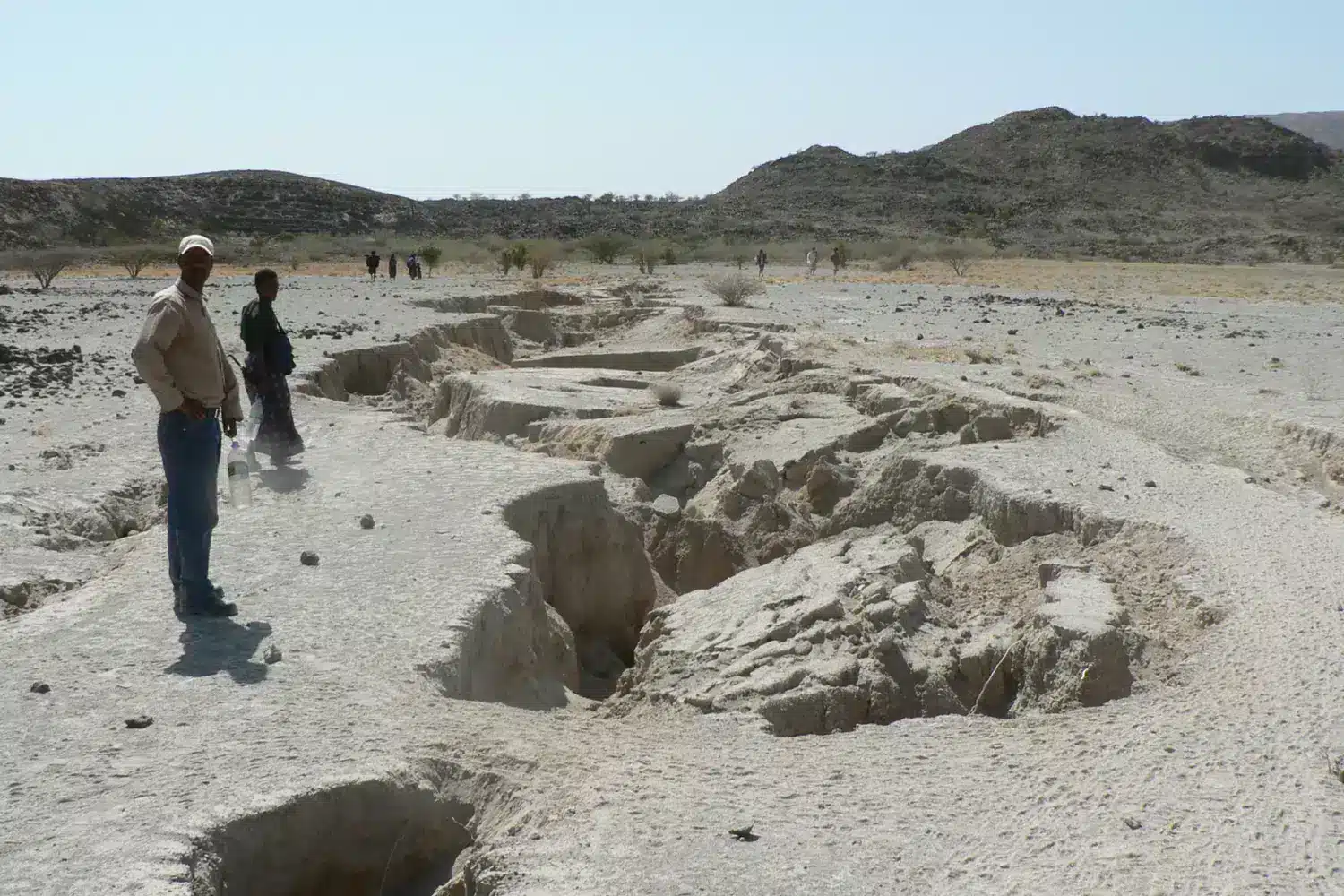The East African Rift System stands as one of Earth’s most spectacular geological wonders, demonstrating the immense forces that continue to shape our planet. This remarkable feature extends over 6,000 kilometers from the Red Sea down to Mozambique, creating a distinct boundary where the African continent is literally being torn apart. What makes this phenomenon truly extraordinary is that we can observe this continental division happening in real time.
The geological marvel splitting an ancient continent
Africa’s eastern region is experiencing a dramatic transformation that most continents undergo only once in hundreds of millions of years. The East African Rift marks the boundary where three major tectonic plates – the Somali, African, and Arabian plates – are gradually pulling away from each other. This continental breakup has been ongoing for approximately 25 million years, but recent events suggest the process might be accelerating.
At the heart of this geological drama lies a fascinating mechanism. As these tectonic plates drift apart, they create massive valleys bordered by volcanic mountains, including the majestic Kilimanjaro. The Horn of Africa region – encompassing Somalia, Ethiopia, and Kenya – is gradually separating from the mainland at rates varying from millimeters to centimeters each year.
In 2005, scientists witnessed an unexpected acceleration of this process when a massive fissure approximately 60 kilometers long suddenly opened in western Ethiopia. Within minutes, the ground separated by two meters – a shift that would typically require centuries to occur. This dramatic event challenged previous timelines and sparked debate about whether the complete continental division might happen sooner than initially estimated.
Similar geological processes have shaped our planet throughout its history. The formation of the Atlantic Ocean occurred when Africa and the Americas separated millions of years ago, demonstrating how massive geological transformations can dramatically alter Earth’s surface over time.
Birth of a new ocean : transforming Africa’s map
The scientific community widely agrees that this continental separation will eventually lead to the formation of a new ocean. Gilles Chazot, a geology professor at the University of Western Brittany, explains that “oceans on Earth are born from the fracturing of a continent that splits in two.” This process mirrors how other major bodies of water formed throughout Earth’s history.
The emerging rift will likely extend from the Afar region at the entrance to the Red Sea southward through Kenya and possibly along Tanzania’s border. Once complete, this geological transformation will convert the Horn of Africa into an enormous island separated from the mainland by a new sea – permanently altering the map of Africa as we know it.
The timeline for this oceanic birth remains debated among experts. While traditional estimates suggested millions of years would pass before complete separation, recent accelerations have prompted some geologists to reconsider their projections. Regardless of exact timing, this continental fracture represents one of the most significant geological events humans have had the opportunity to witness in real-time.
The Horn of Africa’s strategic importance adds another dimension to this phenomenon. The region serves as a critical gateway to the Red Sea and Suez Canal, through which countless ships transport goods globally. Any major geographical changes could potentially impact :
- Global shipping routes and trade patterns
- Regional ecosystems and biodiversity
- Human settlements along the rift zone
- Access to natural resources in the region
These potential impacts highlight why scientists continue to monitor this region closely, using advanced technologies to track even the smallest movements in the Earth’s crust. Much like how researchers in Colorado must understand their specific planting zones due to geographical conditions, communities near the rift must prepare for geological changes that could affect their future.
Tracking the pace of continental division
The East African Rift provides scientists with a rare opportunity to observe continental separation in real-time. Using satellite imagery, GPS measurements, and ground-based sensors, researchers can track the movement of tectonic plates with remarkable precision. These monitoring efforts reveal that different sections of the rift are separating at varying rates.
In the northern Afar region, where the rift connects to the Red Sea, separation occurs at approximately 7-8 millimeters annually. Further south, in Kenya and Tanzania, the rate slows to about 2-5 millimeters per year. While these movements might seem minimal, they accumulate significantly over geological timeframes.
The 2005 Ethiopian fissure event demonstrated how geological processes can sometimes accelerate dramatically. During this episode, decades worth of expected movement occurred within minutes, challenging conventional understanding of continental drift pacing. Similar to how breakthrough technologies can dramatically accelerate scientific progress, these geological “leaps” force scientists to reconsider established timelines.
The volcanic activity along the rift provides additional evidence of the ongoing separation. As the continental crust thins, magma rises closer to the surface, creating chains of volcanoes and geothermal features. These volcanic zones not only mark the boundaries of separation but also provide valuable insights into the processes occurring deep beneath the surface.
For geologists, the East African Rift represents an unparalleled natural laboratory. By studying this active continental breakup, scientists can better understand similar processes that have shaped Earth throughout its 4.5-billion-year history. The insights gained here help inform our understanding of how continents form, separate, and evolve over time.
As this geological drama continues to unfold, one fact remains clear : Africa’s geography is changing before our eyes. This continental fracture offers unprecedented opportunities to witness and study how our planet’s surface continues to evolve, providing a remarkable window into the powerful forces that have shaped Earth since its formation.

